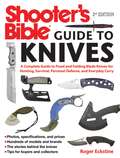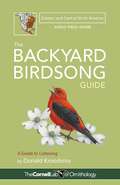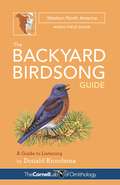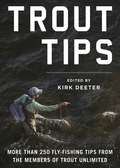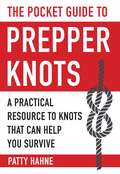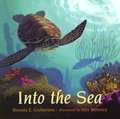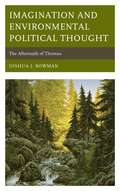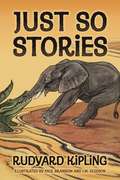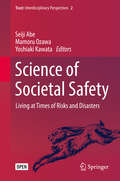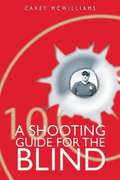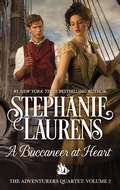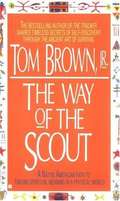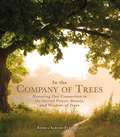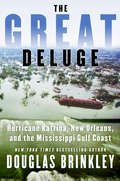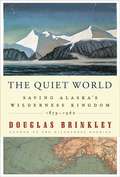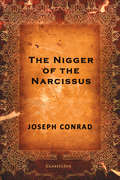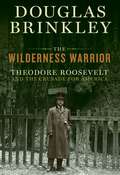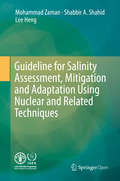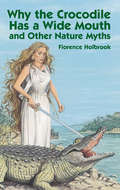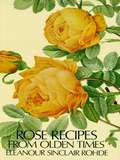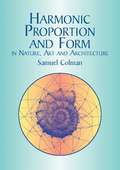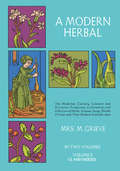- Table View
- List View
Shooter's Bible Guide to Knives: A Complete Guide to Fixed and Folding Blade Knives for Hunting, Survival, Personal Defense, and Everyday Carry
by Roger EckstineIdeal for fans of buck knives, razor blade knives, elephant knives, and other knivesOne of many reputable Shooter’s Bible booksThorough resource for all of the listings and current trends in the knife market, including new manufacturers and metals The Shooter’s Bible Guide to Knives contains everything you need to know about owning, maintaining, and buying all kinds of knives. It sets the basic standard for thorough publications by continuing the Shooter’s Bible tradition of compiling more information and products than any other source. It belongs on bookshelves with other knife collecting books, knives books, firearms survival guides, and top knife books. It is also a classic shooter book. This book contains photographs and descriptions of more than 400 knives that treat readers to product highlights from custom knife makers and major manufacturers. It takes you from the blacksmith shop to high-tech influential designers with new information about locking mechanisms, blade steel, and handle materials. It has an encyclopedic level of information, including: Tips for buyers and collectorsDetailed specifications and pricesKnives for self-defenseKnife anatomyAccessories and sharpenersLegal knowledge for every knife ownerSkyhorse Publishing is proud to publish a broad range of books for hunters and firearms enthusiasts. We publish books about shotguns, rifles, handguns, target shooting, gun collecting, self-defense, archery, ammunition, knives, gunsmithing, gun repair, and wilderness survival. We publish books on deer hunting, big game hunting, small game hunting, wing shooting, turkey hunting, deer stands, duck blinds, bowhunting, wing shooting, hunting dogs, and more. While not every title we publish becomes a New York Times bestseller or a national bestseller, we are committed to publishing books on subjects that are sometimes overlooked by other publishers and to authors whose work might not otherwise find a home.
The Backyard Birdsong Guide Eastern and Central North America: A Guide to Listening
by Donald Kroodsma Larry Mcqueen Jon JanosikBack by popular demand with more than 300,000 copies sold, the Cornell Lab of Ornithology is proud to re-release the widely acclaimed and bestselling bird audio field guide series, Backyard Birdsongs, from award-winning Ornithologist and Author, Donald Kroodsma.Backyard Birdsongs is an interactive handbook of birds and their songs for beginning bird-watchers. With a touch-button electronic module housing common vocalizations of 75 species from across Eastern and Central North America, this volume offers a truly sensory way to identify and get to know local birds. Crisply detailed and scientifically accurate illustrations accompany each entry, and up-to-date range maps provide clear geographical reference points. Complete with an introduction to birdsongs that will inspire readers to look out their kitchen windows and venture out in the field, this unique book provides an exciting entryway into the subtle art of birding.This second edition includes a much-requested new Sound Track Index (to help make watching and listening to birds easier), and a free download of the Cornell Lab's own MERLINTM Bird ID App (on iTunes and Android stores).And as with all Cornell Lab Publishing Group books, 25% of the net proceeds from the sale of Backyard Birdsongs supports projects at the Cornell Lab, such as children's educational and community programs.
The Backyard Birdsong Guide Western North America: A Guide to Listening
by Donald Kroodsma Larry Mcqueen Jon JanosikBack by popular demand with more than 300,000 copies sold, the Cornell Lab of Ornithology is proud to re-release the widely acclaimed and bestselling bird audio field guide series, Backyard Birdsongs, from award-winning Ornithologist and Author, Donald Kroodsma.Backyard Birdsongs is an interactive handbook of birds and their songs for beginning bird-watchers. With a touch-button electronic module housing common vocalizations of 75 species from across Eastern and Central North America, this volume offers a truly sensory way to identify and get to know local birds. Crisply detailed and scientifically accurate illustrations accompany each entry, and up-to-date range maps provide clear geographical reference points. Complete with an introduction to birdsongs that will inspire readers to look out their kitchen windows and venture out in the field, this unique book provides an exciting entryway into the subtle art of birding.This second edition includes a much-requested new Sound Track Index (to help make watching and listening to birds easier), and a free download of the Cornell Lab's own MERLINTM Bird ID App (on iTunes and Android stores).And as with all Cornell Lab Publishing Group books, 25% of the net proceeds from the sale of Backyard Birdsongs supports projects at the Cornell Lab, such as children's educational and community programs.
Trout Tips: More than 250 fly-fishing tips from the members of Trout Unlimited
by Kirk DeeterFrom the mighty rivers of the Pacific Northwest, to the rolling streams of New England, to the freestone streams of the Appalachians, to the frigid waters of Canada, fly fishing is a sport embraced by anglers from all corners of North America. And now from the members of the highly respected conservation organization Trout Unlimited comes a comprehensive volume of tested tips and tactics for flyfishermen from every region and of every skill level.The Trout Unlimited Book of Fly-Fishing Tips covers every aspect of fly fishing. Learn how to select the rod, reel, and fly line that are best suited for your type of fishing. Perfect your casting techniques so you can place your dry fly, nymph, wet fly, or streamer exactly where you want it to be, then get a proper drift over likely holding areas. Want to learn how to tie your own flies? It’s easy with the tips from TU’s tiers. Want to know how to read water, no matter what the conditions? Look no further than this book. Here you’ll find chapters featuring these tips, plus advice on wading, fighting fish, and tying bombproof knots, and much more in this compact and insightful book.Whether you’re a beginning angler looking to get into the sport or an experienced flyfisherman wanting to hone your skills, The Trout Unlimited Book of Fly-Fishing Tips is sure to provide you with tips, tactics, and techniques that will make you a better angler.Skyhorse Publishing is proud to publish a broad range of books for fishermen. Our books for anglers include titles that focus on fly fishing, bait fishing, fly-casting, spin casting, deep sea fishing, and surf fishing. Our books offer both practical advice on tackle, techniques, knots, and more, as well as lyrical prose on fishing for bass, trout, salmon, crappie, baitfish, catfish, and more. While not every title we publish becomes a New York Times bestseller or a national bestseller, we are committed to publishing books on subjects that are sometimes overlooked by other publishers and to authors whose work might not otherwise find a home.
The Pocket Guide to Prepper Knots: A Practical Resource to Knots That Can Help You Survive (Pocket Guide)
by Patty HahneKnowing the ropes when a catastrophic situation strikes can be the key to survival, and in The Pocket Guide to Prepper Knots, Patty Hahne demonstrates the most important multi-purpose knots preppers should be prepared to know. Illustrated with step-by-step instructions for tying them and the knots being used in various situations, the book covers such topic as:•The uses for various types of ropes as well as their advantages and disadvantages•How putting a knot in a rope affects its overall strength•Why being proficient in a few multi-purpose knots is more beneficial than being vaguely familiar with a large number of knots•And much moreThe Pocket Guide to Prepper Knots is a valuable addition to any prepper’s book collection. Its compact design makes it easy to carry in a purse or pocket, stored in the car, or slipped into a bug-out bag.
Into the Sea
by Brenda Z. Guiberson Alix Berenzy<p>Brenda Z. Guiberson’s Into the Sea follows the fragile life cycle of an endangered sea turtle in a children’s picture book story gorgeously illustrated by Alix Berenzy. <p>From the moment it hatches from its shell through its journey across an ocean filled with wonders and dangers to its return to the beach where it was born to lay its own eggs, a female sea turtle’s life is one of survival.</p>
Imagination and Environmental Political Thought: The Aftermath of Thoreau (Politics, Literature, and Film)
by Joshua J. Bowman<p>Imagination and Environmental Political Thought: The Aftermath of Thoreau seeks to correct oversimplified readings of Henry David Thoreau’s political thought by elucidating a key tension within his imagination. With the celebration of Thoreau’s two-hundredth birthday now past, this study outlines, and builds on, his own understanding of imagination and considers its implications for environmental politics. Despite the use of the word, “aftermath,” Thoreau’s legacy for environmental political thought is primarily constructive and foundational for modern environmentalism. <p>Thoreau’s virtues and vices have been inherited by his environmentally-conscious readers. The author of Walden’s preference for an abstract, ahistorical “higher law,” his radical concept of autonomy, and his frustration with government and community foster an impractical political thought characteristic of an idyllic imagination. Nevertheless, Thoreau demonstrates a more prudential and moral imagination by emphasizing the inescapable relationship between the moral order of individuals and the order of political communities and by pioneering the central questions of humanity’s relationship to non-human nature. Can this tension of imaginations be resolved? What are the consequences of this tension? <p>Thoreau’s overall vision ultimately creates significant problems with which environmentalists still struggle. While Thoreau’s emphasis on freedom and the immaterial aspects of human and non-human nature are of considerable value, his abstract political morality, misanthropy and escapism must be resisted both for the sake of environmental well-being and human dignity. <p>In addition, this book is an exercise in re-thinking how the humanities may provide scholars critical insights to better diagnose and respond to the environmental challenges of our time.</p>
About Mammals: A Guide for Children (Fountas & Pinnell LLI Blue #Level J)
by Cathryn Sill John SillThis beginner’s guide offers a first glimpse into the diverse and natural world of mammals. In this addition to the acclaimed About… series, educator and author Cathryn Sill uses simple, easy-to-understand language to teach children what mammals are, what they eat, and where they live. With beautifully detailed, realistic paintings, noted wildlife illustrator John Sill introduces readers to the huge variety of mammals, from the tiny White-footed Deermouse to the large American Bison. An afterword provides details on the animals featured and inspires readers to learn more.
Just So Stories
by Rudyard Kipling Paul Bransom J. M. GleesonFor Mowgli movie fans, the must-have companion to The Jungle Book!Children all around the world are fascinated by the animal kingdom, and that’s what makes the Just So Stories a perennial classic… Elephants, kangaroos, cats, leopards, and more. This complete volume of Rudyard Kipling’s masterpiece includes all 12 original stories: How the Whale Got His Throat How the Camel Got His Hump How the Rhinoceros Got His Skin How the Leopard Got His Spots The Elephant’s Child The Sing-Song of Old Man Kangaroo The Beginning of the Armadillos How the First Letter was Written How the Alphabet was Made The Crab that Played with the Sea The Cat that Walked by Himself The Butterfly that StampedKipling first entertained his own children with these delightful and humorous tales before deciding to write them down for publication. The parables are written in the form of what came to be known as “why” stories, each explaining how and why certain things came to be as they are.In addition to these clever fables, this volume features thirteen full-color illustrations and more than thirty black-and-white illustrations by J. M. Gleeson and Paul Bransom, as well as several images created by Kipling himself. With their entertaining characters and well-executed narrative arcs, the Just So Stories are perfect for readers both young and old—to read separately and, more importantly, together.
Science of Societal Safety: Living At Times Of Risks And Disasters (Trust Ser. #2)
by Yoshiaki Kawata Mamoru Ozawa Seiji AbeThis open access book covers comprehensive but fundamental principles and concepts of disaster and accident prevention and mitigation, countermeasures, and recovery from disasters or accidents including treatment and care of the victims. Safety and security problems in our society involve not only engineering but also social, legal, economic, cultural, and psychological issues. The enhancement needed for societal safety includes comprehensive activities of all aspects from precaution to recovery, not only of people but also of governments. In this context, the authors, members of the Faculty of Societal Safety Science, Kansai University, conducted many discussions and concluded that the major strategy is consistent independently of the type and magnitude of disaster or accident, being also the principle of the foundation of our faculty.The topics treated in this book are rather widely distributed but are well organized sequentially to provide a clear understanding of the principles of societal safety. In the first part the fundamental concepts of safety are discussed. The second part deals with risks in the societal and natural environment. Then follows, in the third part, a description of the quantitative estimation of risk and its assessment and management. The fourth part is devoted to disaster prevention, mitigation, and recovery systems. The final, fifth part presents a future perspective of societal safety science.Thorough reading of this introductory volume of societal safety science provides a clear image of the issues. This is largely because the Japanese have suffered often from natural disasters and not only have gained much valuable information about disasters but also have accumulated a store of experience. We are still in the process of reconstruction from the Great East Japan earthquake and the Fukushima nuclear power plant accident. This book is especially valuable therefore in studying the safety and security of people and their societies.
A Shooting Guide for the Blind
by Carey McWilliamsThis is a guide regarding the proper application of firearms, especially by those with any degree of visual impairment, with an emphasis on safe firearms usage when engaging in activities such as hunting, target shooting, and even self-defense at home or on the street. Author Carey McWilliams became the first totally blind person to obtain a concealed carry license in 2001. In this book, he utilizes his thirty years of certified gun training to teach others with visual impairments, as well as those seeking to train them, all the various methods that have allowed him to pass countless shooting exams to obtain a number of state-issued concealed carry permits and hunting licenses. For this guide's creation, real guns from the author's personal firearms collection were used as props for certain technical sections, as well as old written text and recorded lectures obtained during his training through the National Rifle Association, law enforcement, and even the United States Army. Topics include how to identify, load, unload, and work with different types of firearms without the benefit of sight, how the military's techniques in close-quarters combat governs defensive shooting by the blind, case studies and official government research debunking the myth that blind people pose a greater danger than the sighted regarding firearm usage, and how to find resources to obtain training certification.
A Buccaneer at Heart: The Adventurers Quartet (The Adventurers Quartet #2)
by Stephanie LaurensOnly from #1 New York Times bestselling author STEPHANIE LAURENS, the second story of THE ADVENTURERS QUARTET, where Regency-era intrigue, danger, romance and passion abound.A secret mission… After a decade leading diplomatic voyages and covert missions for the Crown, Captain Robert Frobisher decides that establishing a home—with hearth and wife—should be his next challenge. But when an urgent summons arrives, Robert puts his wishes aside and agrees to set sail immediately. His goal is clear: get to Freetown, determine the location of a slavers’ camp and return to London with the information. A distracting complication… In Freetown, Miss Aileen Hopkins is determined to find her brother Will, a naval lieutenant who has mysteriously disappeared, and she will not allow anyone to turn her from her path. But all too quickly, that path grows dark and dangerous. And then Robert Frobisher appears and attempts to divert her in more ways than one. An unexpected alliance… Joining forces with Aileen, Robert vows to complete his mission and secure the woman he wants as his wife. Compelled to protect the innocent and bring retribution to a heartless enemy, they plunge into the jungle with only each other to rely on, and with the courage of their hearts as their guide. Follow THE ADVENTURERS as they continue their voyages across the high seas to the riveting and triumphant conclusion.Originally published in 2016
The Way Of The Scout: A Native American Path to Finding Spiritual Meaning in a Physical World
by Tom BrownPresents twelve episodes illustrating the expert skills in tracking that the author learned from an Apache expert, demonstrating how the Native American art of survival can bring the spiritual rewards of higher consciousness and inner peace.
In the Company of Trees: Honoring Our Connection to the Sacred Power, Beauty, and Wisdom of Trees
by Andrea Sarubbi FereshtehFascinating facts, trivia, and stories celebrating nature and the magnificent life of trees and their invaluable place in our lives, including beautiful, full-color photographs throughout.When was the last time you spent time outside? The space between your front door and your car doesn’t count. Nature holds incredible power to soothe our spirits, calm our minds, and open us up to creativity, if we can unplug long enough to step away from our screens and embrace it. And while they say you can’t see the forest for the trees, they play perhaps the leading role in our enjoyment of the outdoors. In the Company of Trees helps you rediscover your own connection to the world outside, with over 195 quotes, facts, and stories honoring trees from across the world and in our own back yards alike. Inviting, full-color photos of sun-dappled forests and tree-filled hikes throughout will inspire you to do some forest-bathing of your own and embrace the healing power of nature.
Shooter's Bible Guide to Concealed Carry, 2nd Edition: A Beginner's Guide to Armed Defense
by Brad FitzpatrickIf you are one of the millions of Americans who chooses to exercise your Second Amendment Right but haven’t quite mastered the proper technique with guns, then this is the essential manual for you. It is your right to carry a firearm to protect yourself and your family. However, it is your responsibility to know how to operate that gun correctly and safely. Don’t wait to be placed in a dangerous setting faced with an armed attacker. The updated second edition of the Shooter’s Bible Guide to Concealed Carry is an all-encompassing resource that not only offers vital gun terminology, but also suggests which gun is the right fit for you and how to efficiently use the device properly, be it in public or home. Firearm expert Brad Fitzpatrick examines how to practice, how to correct mistakes, and how to safely challenge yourself when you have achieved basic skills. Included within is a comprehensive chart describing the various calibers for concealed carry, suitable instructions for maintaining it, and most importantly, expert step-by-step instructions for shooting. Once again, renowned firearms expert Fitzpatrick delivers poignant tips and provides valuable information. The purpose of this book is to familiarize yourself with firearms and to gain the confidence you need to protect yourself in the worst of situations.“My experience working with Skyhorse is always a positive collaboration. The editors are first-rate professionals, and my books receive top-shelf treatment. I truly appreciate our working relationship and hope it continues for years to come.” –David Fischer, author
The Great Deluge: Hurricane Katrina, New Orleans, and the Mississippi Gulf Coast
by Douglas BrinkleyIn the span of five violent hours on August 29, 2005, Hurricane Katrina destroyed major Gulf Coast cities and flattened 150 miles of coastline. But it was only the first stage of a shocking triple tragedy. On the heels of one of the three strongest hurricanes ever to make landfall in the United States came the storm-surge flooding, which submerged a half-million homes--followed by the human tragedy of government mismanagement, which proved as cruel as the natural disaster itself. In The Great Deluge, bestselling author Douglas Brinkley finds the true heroes of this unparalleled catastrophe, and lets the survivors tell their own stories, masterly allowing them to record the nightmare that was Katrina.
The Quiet World: Saving Alaska's Wilderness Kingdom, 1879-1960
by Douglas BrinkleyA riveting history of America's most beautiful natural resources, The Quiet World documents the heroic fight waged by the U.S. federal government from 1879 to 1960 to save wild Alaska--Mount McKinley, the Tongass and Chugach national forests, Gates of the Arctic, Glacier Bay, Lake Clark, and the Coastal Plain of the Beaufort Sea, among other treasured landscapes--from the extraction industries. Award-winning historian Douglas Brinkley traces the wilderness movement in Alaska, from John Muir to Theodore Roosevelt to Aldo Leopold to Dwight D. Eisenhower, with narrative verve. Basing his research on extensive new archival material, Brinkley shows how a colorful band of determined environmentalists created the Arctic National Wildlife Refuge just before John F. Kennedy became president. Brinkley introduces a lively gallery of characters influential in preserving Alaska's wilderness resources: the indomitable U.S. Supreme Court justice William O. Douglas, who championed the Brooks Range; charming Ivy League explorer Charles Sheldon, who led the campaign to create Denali National Park; intrepid Bob Marshall, who cofounded The Wilderness Society; hermit illustrator Rockwell Kent, who lived in isolation on Fox Island like a modern Thoreau; nature photographer Ansel Adams, whose image Mount McKinley and Wonder Lake set off a tsunami of public interest in America's tallest peak; and U.S. Fish and Wildlife biologist Rachel Carson, who promoted proper ocean stewardship; among many more. Wildlife fervently comes to life in The Quiet World: Brinkley tells incredible stories about the sea otters in the Aleutians, moose in the Kenai Peninsula, and bird life across the Yukon Delta expanse while exploring the devastating effects that reckless overfishing, seal slaughter, and aerial wolf hunting have wrought on Alaska's once-abundant fauna. While taking into account Exxon Valdez-like oil spills, The Quiet World mainly celebrates how the U.S. government has preserved many of Alaska's great wonders for future generations to enjoy.
The Nigger of the Narcissus: A Tale Of The Forecastle
by Joseph ConradCritically ill when he joins the crew of the Narcissus, James Wait works but a small part of the voyage before being confined to his berth. His illness, considered mortal, rallies the crew around him and they risk both their lives and the safety of the ship to save the dying man.Be it mystery, romance, drama, comedy, politics, or history, great literature stands the test of time. ClassicJoe proudly brings literary classics to today's digital readers, connecting those who love to read with authors whose work continues to get people talking. Look for other fiction and non-fiction classics from ClassicJoe.
The Wilderness Warrior: Theodore Roosevelt and the Crusade for America
by Douglas Brinkley<P>In this groundbreaking epic biography, Douglas Brinkley draws on never-before-published materials to examine the life and achievements of our "naturalist president." <P>By setting aside more than 230 million acres of wild America for posterity between 1901 and 1909, Theodore Roosevelt made conservation a universal endeavor. This crusade for the American wilderness was perhaps the greatest U.S. presidential initiative between the Civil War and World War I. Roosevelt's most important legacies led to the creation of the U.S. Fish and Wildlife Service and passage of the Antiquities Act in 1906. His executive orders saved such treasures as Devils Tower, the Grand Canyon, and the Petrified Forest. <P>Tracing the role that nature played in Roosevelt's storied career, Brinkley brilliantly analyzes the influence that the works of John James Audubon and Charles Darwin had on the young man who would become our twenty-sixth president. With descriptive flair, the author illuminates Roosevelt's bird watching in the Adirondacks, wildlife obsession in Yellowstone, hikes in the Blue Ridge Mountains, ranching in the Dakota Territory, hunting in the Big Horn Mountains, and outdoor romps through Idaho and Wyoming. <P>He also profiles Roosevelt's incredible circle of naturalist friends, including the Catskills poet John Burroughs, Boone and Crockett Club cofounder George Bird Grinnell, forestry zealot Gifford Pinchot, buffalo breeder William Hornaday, Sierra Club founder John Muir, U.S. Biological Survey wizard C. Hart Merriam, Oregon Audubon Society founder William L. Finley, and pelican protector Paul Kroegel, among many others. He brings to life hilarious anecdotes of wild-pig hunting in Texas and badger saving in Kansas, wolf catching in Oklahoma and grouse flushing in Iowa. Even the story of the teddy bear gets its definitive treatment. <P>Destined to become a classic, this extraordinary and timeless biography offers a penetrating and colorful look at Roosevelt's naturalist achievements, a legacy now more important than ever. Raising a Paul Revere-like alarm about American wildlife in peril--including buffalo, manatees, antelope, egrets, and elk--Roosevelt saved entire species from probable extinction. <P>As we face the problems of global warming, overpopulation, and sustainable land management, this imposing leader's stout resolution to protect our environment is an inspiration and a contemporary call to arms for us all. <P><b>A New York Times Bestseller</b>
Guideline for Salinity Assessment, Mitigation and Adaptation Using Nuclear and Related Techniques
by Mohammad Zaman Shabbir A. Shahid Lee HengThis open access book is an outcome of the collaboration between the Soil and Water Management & Crop Nutrition Section, Joint FAO/IAEA Division of Nuclear Techniques in Food and Agriculture, Department of Nuclear Sciences and Applications, International Atomic Energy Agency (IAEA), Vienna, Austria, and Dr. Shabbir A Shahid, Senior Salinity Management Expert, Freelancer based in United Arab Emirates.The objective of this book is to develop protocols for salinity and sodicity assessment and develop mitigation and adaptation measures to use saline and sodic soils sustainably. The focus is on important issues related to salinity and sodicity and to describe these in an easy and user friendly way. The information has been compiled from the latest published literature and from the authors’ publications specific to the subject matter. The book consists of six chapters. Chapter 1 introduces the terms salinity and sodicity and describes various salinity classification systems commonly used around the world. Chapter 2 reviews global distribution of salinization and socioeconomic aspects related to salinity and crop production. Chapters 3 covers comprehensively salinity and sodicity adaptation and mitigation options including physical, chemical, hydrological and biological methods. Chapter 4 discusses the efforts that have been made to demonstrate the development of soil salinity zones under different irrigation systems. Chapter 5 discusses the quality of irrigation water, boron toxicity and relative tolerance to boron, the effects of chlorides on crops. Chapter 6 introduces the role of nuclear techniques in saline agriculture.
Why the Crocodile Has a Wide Mouth: and Other Nature Myths (The Land of Oz)
by Florence HolbrookThese fifty-four wonder-filled stories, adapted for curious young minds, describe in simple folktale style how many amazing creatures of the earth were created — and why they look and act as they do — and other natural phenomena.Learn why the rabbit is timid and the bear has a short tail. Find out how fire was brought to the Indians, and how summer came to the earth. Discover why the sea is salty and evergreen trees never lose their leaves. Meet the children in the moon and the first grasshopper.Enhanced by 29 illustrations, these beguiling narratives gathered from primitive cultures around the world will delight children, lovers of tall tales, and anyone interested in folklore from faraway lands.
Rose Recipes from Olden Times
by Eleanour Sinclair RohdeEven though nowadays roses are cultivated mostly for their beauty, previous ages have not been so singularly narrow-minded. Even at the turn of the century many people in appreciation of the fragrance, sweet flavor, and medicinal virtues of rose petals, hips, and leaves, still took pleasure in age-old traditional ways of making perfumes, sweet waters, jams, jellies, salads, sauces, and various kinds of confections with roses. They also knew how to crystallize the petals, to preserve the buds, to flavor wines and vinegar with rose leaves, and to use roses in many medicinal ways.With thanks in great measure to the extraordinary modern herbalist Eleanour Sinclair Rohde, this wonderful knowledge has not vanished beyond recall. Her collection of rose recipes between these covers is gathered from the works of a variety of old herbalists (notably Sir Hugh Platt, Gervase Markham, and Sir Kenelm Digby), as well as from her own vast knowledge of traditional herbal recipes. "Receipts" from four centuries include: pot-pourris, sweet bags and pomanders (using dried roses with such extra ingredients as mint, cloves, coriander, lavender flowers, and sandalwood); sweet waters (with ingredients like nutmeg, cardamom, orange peel, and cloves) that can be used for washing; perfumes, oil of roses, and "odoriferous" candles; and a host of culinary delights like conserves (both petals and hips), sauce eglantine, rossoly, rose jelly, rose hip marmalade, and pickled rosebuds.There are 83 recipes altogether, including instructions on how to dry rose leaves (four ways), how to candy rose leaves, how to preserve whole roses, and how to flavor sugar, wine, vinegar, and honey with roses. Every page is beautifully and distinctively decorated, making this not only a source of special joy for connoisseurs of herbs and herbals, but in all ways a pleasure to read and use for anyone wanting the best rose recipes.
Harmonic Proportion and Form in Nature, Art and Architecture (General Science)
by Samuel ColmanA treatise on the laws governing proportional form in both nature and the arts and sciences, this well-illustrated volume amply demonstrates how a design's geometrical construction can captivate both the eye and the mind. Flowers, shells, and other natural organisms appear here, along with artistic creations, in a mathematical study of the similarity of their constructive principles. These principles, in turn, are the fundamental elements by which nature creates harmony.The author, Samuel Colman (1832–1920), was a prominent member of the Hudson River School of painters ("Storm King on the Hudson," his 1866 oil on canvas, is one of his best-known works), and an embodiment through his life and work of the school's celebration of nature through art. As an activist in the politics of art, Colman helped form the Society of American Artists as well as the American Society of Painters in Water Colors, a relatively new medium at the time. He was also a teacher and associate of Louis Comfort Tiffany; in 1879, the two joined forces to establish an interior design firm that included Mark Twain among its clientele.This handsome and provocative volume is enhanced by 302 drawings by the author that complement and amplify each subject area discussed. It also includes an important Mathematical Analysis by the editor, C. Arthur Coan. As a multifaceted study, this book will find an audience among artists and philosophers, as well as scientists and mathematicians.
A Garden of Flowers: All 104 Engravings from the Hortus Floridus of 1614 (Dover Pictorial Archive Ser.)
by Crispin van de PassExcellent reproduction teems with accurate, full-page images of garden flowers. Information on each plant describes leaves, flowers, seed pods, roots, and size and color of each blossom. 104 black-and-white illustrations.
A Modern Herbal: Vol. II
by Margaret GrieveIf you want to know how pleurisy root, lungwort, and abscess root got their names, how poison ivy used to treat rheumatism, or how garlic guarded against the Bubonic Plague, consult A Modern Herbal. This 20th-century version of the medieval Herbal is as rich in scientific fact and folklore as its predecessors and is equally encyclopedic in coverage. From aconite to zedoary, not an herb, grass, fungus, shrub or tree is overlooked; and strange and wonderful discoveries about even the most common of plants await the reader.Traditionally, an herbal combined the folk beliefs and tales about plants, the medicinal properties (and parts used) of the herbs, and their botanical classification. But Mrs. Grieve has extended and enlarged the tradition; her coverage of asafetida, bearberry, broom, chamomile, chickweed, dandelion, dock, elecampane, almond, eyebright, fenugreek, moss, fern, figwort, gentian, Hart's tongue, indigo, acacia, jaborandi, kava kava, lavender, pimpernel, rhubarb, squill, sage, thyme, sarsaparilla, unicorn root, valerian, woundwort, yew, etc. — more than 800 varieties in all — includes in addition methods of cultivation; the chemical constituents, dosages, and preparations of extracts and tinctures, unknown to earlier herbalists; possible economic and cosmetic properties, and detailed illustrations, from root to bud, of 161 plants.Of the many exceptional plants covered in Herbal, perhaps the most fascinating are the poisonous varieties — hemlock, poison oak, aconite, etc. — whose poisons, in certain cases, serve medical purposes and whose antidotes (if known) are given in detail. And of the many unique features, perhaps the most interesting are the hundreds of recipes and instructions for making ointments, lotions, sauces, wines, and fruit brandies like bilberry and carrot jam, elderberry and mint vinegar, sagina sauce, and cucumber lotion for sunburn; and the hundreds of prescriptions for tonics and liniments for bronchitis, arthritis, dropsy, jaundice, nervous tension, skin disease, and other ailments. 96 plates, 161 illustrations.
